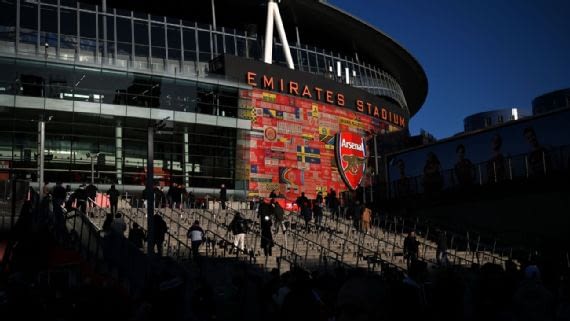Arsenal’s Financial Rollercoaster: A Year of Record Revenue and Rising Wages
In the world of football, financial health is as crucial as on-field performance. Arsenal, one of the Premier League’s most storied clubs, has recently announced a financial loss of £17.7 million ($22.3 million) for the year ending May 31, 2024. This announcement comes despite the club generating a record-breaking revenue of £616.6 million over the same period, a significant increase from the £466.7 million reported the previous year. The club’s financial report highlights a fascinating interplay between revenue generation, player trading, and wage expenses.
Arsenal’s return to the UEFA Champions League after a six-year absence was a significant milestone. The team reached the quarterfinals, only to be narrowly defeated by Bayern Munich with a 3-2 aggregate score. This return to Europe’s elite competition undoubtedly contributed to the club’s financial performance, alongside the Arsenal Women’s team setting a Women’s Super League attendance record of 60,160 during their match against Manchester United at the Emirates Stadium.
Wage Increases and Transfer Market Activity
One of the most striking aspects of Arsenal’s financial report is the substantial increase in player wages, which rose from £234.8 million to £327.8 million. This increase is partly attributed to the club’s ambitious transfer activities. Arsenal made headlines with the acquisition of Declan Rice from West Ham for a fee of up to £105 million, Kai Havertz from Chelsea for £67.5 million, and Jurriën Timber for an initial fee of £38 million.
On the flip side, Arsenal also engaged in significant player sales. Folarin Balogun was sold to Monaco for around £35 million, while Granit Xhaka joined Bayer Leverkusen for £21.4 million. Despite these sales, the club cited UEFA’s Financial Fair Play regulations and the Premier League’s Profit and Sustainability Rules (PSR) as factors creating a challenging market for raising funds.
Challenges in Player Trading
In a statement released on the club’s website, Arsenal acknowledged the impact of market conditions on their ability to realize profits from player trading. The statement read: “Player trading profits continue to have a significant impact on overall profitability and the club’s ability to realise profits during 2023/24 was again adversely impacted by market conditions with reduced overall liquidity as clubs’ acquisition budgets continued to be impacted by financial pressures.”
Despite these challenges, the Premier League confirmed that all 20 clubs, including Arsenal, were fully compliant with PSR rules for the last season. This compliance is a testament to the club’s financial management amidst a complex regulatory environment.
Transfer Window Decisions and Future Prospects
Arsenal faced criticism for not signing a striker during the summer and January transfer windows, decisions not covered in the latest financial accounts. The club’s net spend last summer was around £13 million, with notable signings including Riccardo Calafiori, Mikel Merino, and the permanent acquisition of David Raya from Brentford. Raheem Sterling also joined on loan from Chelsea.
- Emile Smith Rowe was sold to Fulham.
- Eddie Nketiah joined Crystal Palace.
- Aaron Ramsdale moved to Southampton.
These sales, particularly of academy graduates like Smith Rowe and Nketiah, were financially beneficial as they count as pure profit under PSR terms. Arsenal’s late attempt to sign Ollie Watkins from Aston Villa was unsuccessful, with a £40 million bid rejected and the player’s £60 million valuation deemed too high.
Looking ahead, Arsenal’s statement concluded on a positive note: “Consecutive qualifications for the UEFA Champions League for 2024-25 for both men’s and women’s teams represent a positive continuation of the club’s progress and we look forward to an exciting end to the 2024-25 season.”
Originally Written by: James Olley





















